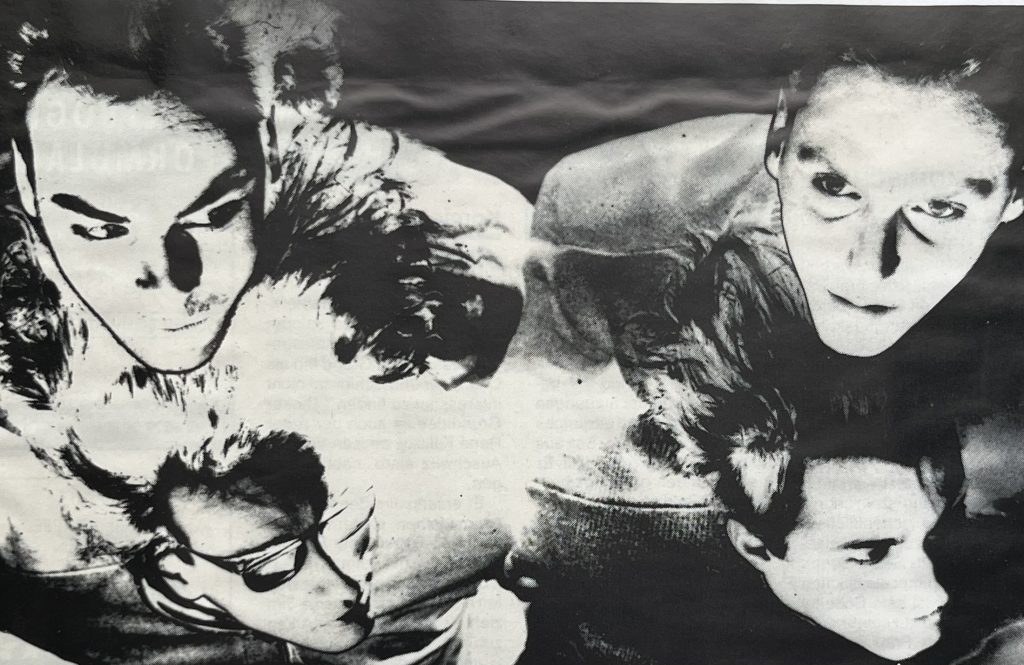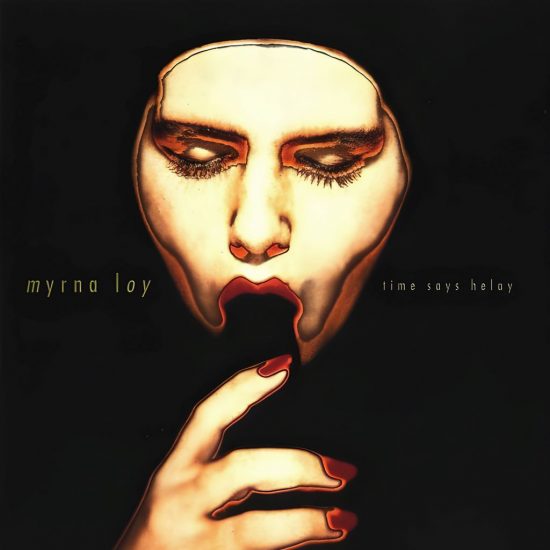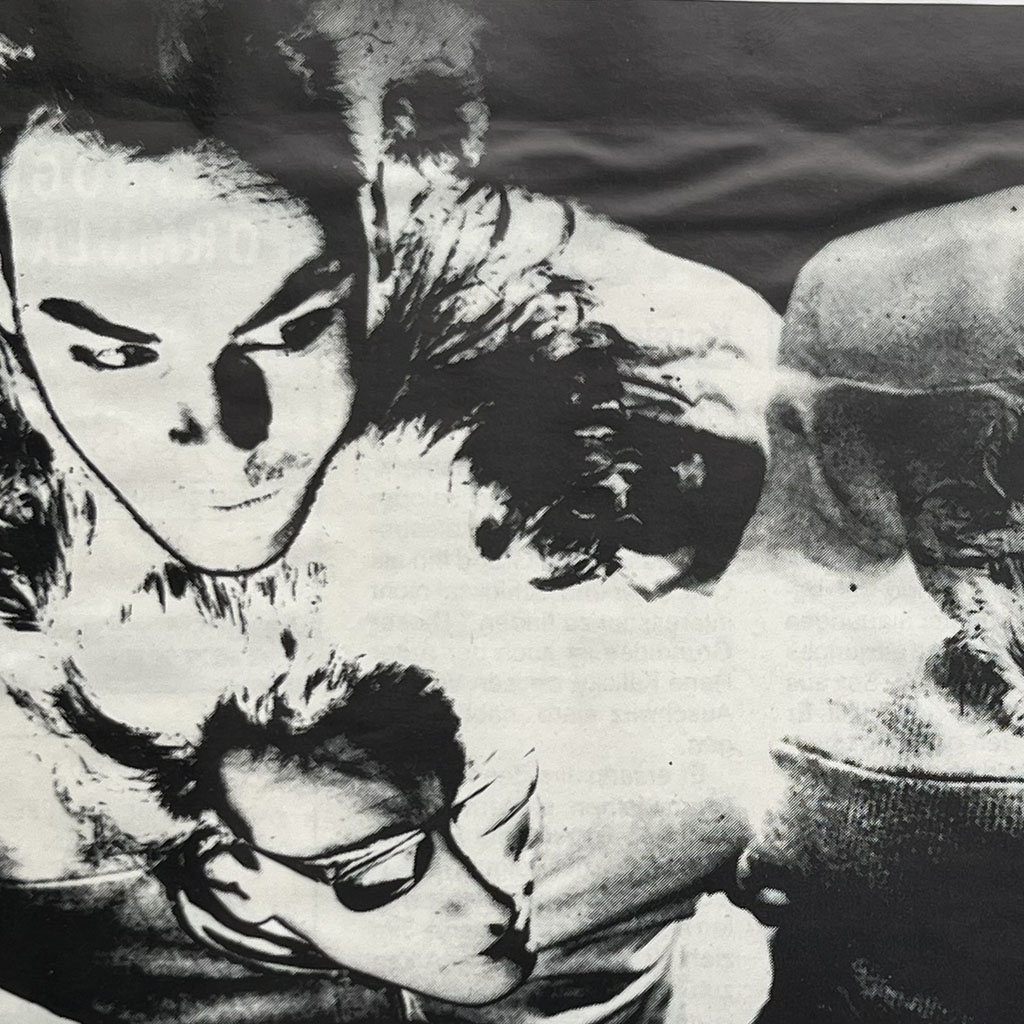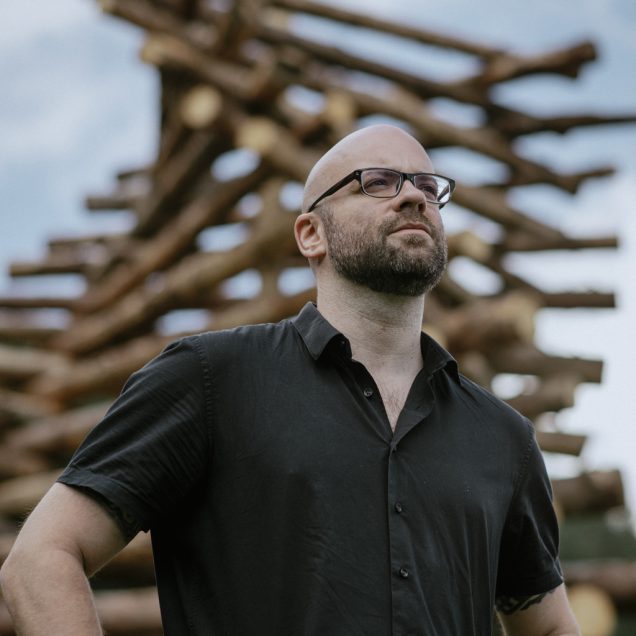Interview with MYRNA LOY (1/2)

“The cover was polarizing, just like our music.”
2 facts:
– 1989/90 Myrna Loy And Also the Trees and Anne Clark supported the band.
– Myrna Loy is the name of a now deceased silent film actress. The name was chosen not only for aesthetic reasons, but also because it does not allow any conclusions to be drawn about the music.
To mark the digital release of their second album “Time Says Helay“, we talk to band leader Victor D and reminisce about the past. We talk about polarizing art, change and development.
Conversation with time?
Orkus: What’s the story behind the album title “Time Says Helay”?
Victor D.: The phenomenon and the concept of time as such have always preoccupied me at the time and throughout my life. Time is a component of life that is not tangible, but which significantly determines the life of every individual. The way we think of time in the western world, it defines our beginning, our birth and our end, our death. I have often thought of time as a person I could talk to. Time would approach me: “Hello, are you looking for a conversation with me?”
Polarizing images

O: You caused quite a stir back then with the cover picture by Kerstin Vieg and Olaf Meyer … How do you feel about it today? – And how did it come about in the first place?
VD: We didn’t even know Kerstin at the beginning. After she had designed the first cover very successfully, we gave Kerstin a completely free hand with the design of the second cover. The ideas always came from her and Olaf then took over the graphic design. At the time, he was already a very popular and busy designer who mainly designed book covers. When we were presented with the cover for the second album immediately after the recordings were finished, I and everyone else in the band were very excited. The provocative element of the cover really appealed to me.
I once saw a whole advertising pillar completely covered with our cover during our tour. It was interesting how strong the reactions of normal passers-by were, some stood in front of it and just shook their heads, others paused and seconds later, having understood the motif, walked on amused. The cover was polarizing, just like our music.
Art or provocation?
O: Could you have even dreamed that despite (or because of?) the controversy it would be voted one of the best album covers of the year by several magazines?
VD: When I first saw the motif, I knew it would be provocative and that it was well designed. Although the motif is very clear, it is depicted in a very abstract way. By omitting certain details, spatial references, the motif is no longer clearly recognizable and leaves room for interpretation, such as the fact that it could also represent a nun. In my view, the cover really is art because it represents a successful projection surface for the imagination of the respective viewer.
Constant change?
O: How important is art in music in general? And has that changed over the years?
VD: We always felt that music should have a certain aesthetic that also creates images. 4AD was inspiring in many ways back then. At Normal we – coincidentally – had a local record company with a great artwork department that had similar aspirations. Classical art was not necessarily our field of inspiration. The fact that romanticism was occasionally attached to us fits quite well with the first record in places. The second record was altogether more psychedelic, peppered with samples from a wide variety of musical genres and is altogether more difficult to grasp. Critics loved the record. The most constant thing with us has always been change.
Development
O: Your debut album “I Press My Lips in Your Inner Temple” was recorded in just five days at Conny Plank Studio. How did the recording situation differ from the second album?
VD: The framework conditions for the second album differed fundamentally from the first album for several reasons:
- We received an advance and were able to buy an 8-track recorder and a hardware sequencer/sampler – which could also be used live. This changed and enriched our music in many areas.
- After the unexpected success of the first album, we concentrated exclusively on our music in 1990/91 and interrupted our studies. Those were Myrna Loy’s most creative years and we created almost 20 songs in just twelve months.
- Our studio budget had also improved: instead of five days, we were able to work in the Conny Plank studio for almost three weeks. Otherwise a song like “ROT” would have been unthinkable. We sat together for 1.5 days to mix this song alone.
In the second part, we talk to Victor about individual songs and challenges. Of course, we also take a look into the future.
Claudia Zinn-Zinnenburg
Line-up:
Victor D. – vocals
Mikele – guitar
Cord D. – bass
Alex – keyboards, sampler
Listen to the album “Time Says Helay” here:
You can subscribe to the Orkus1.com newsletter here:




